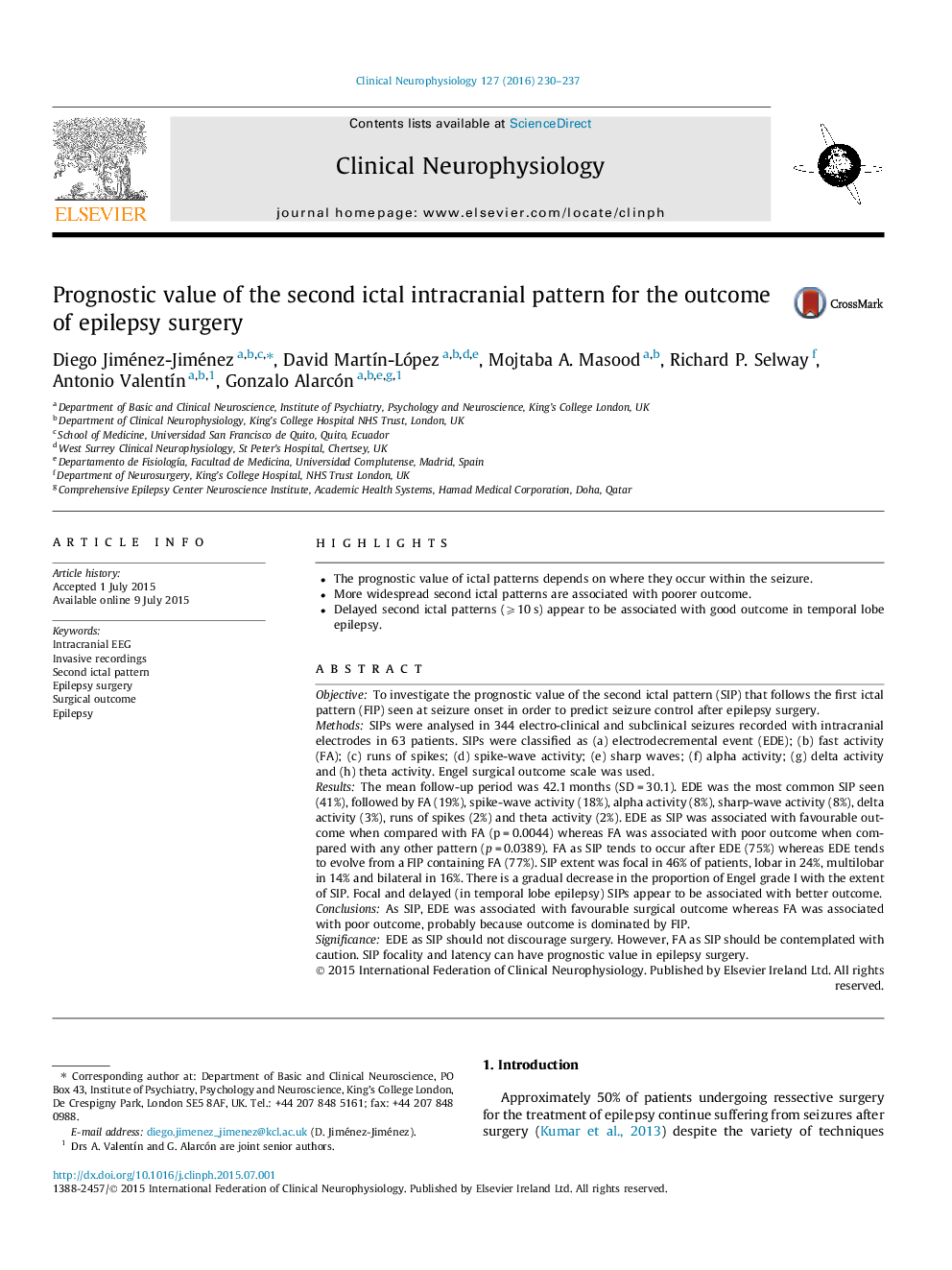| Article ID | Journal | Published Year | Pages | File Type |
|---|---|---|---|---|
| 6007863 | Clinical Neurophysiology | 2016 | 8 Pages |
â¢The prognostic value of ictal patterns depends on where they occur within the seizure.â¢More widespread second ictal patterns are associated with poorer outcome.â¢Delayed second ictal patterns (⩾10 s) appear to be associated with good outcome in temporal lobe epilepsy.
ObjectiveTo investigate the prognostic value of the second ictal pattern (SIP) that follows the first ictal pattern (FIP) seen at seizure onset in order to predict seizure control after epilepsy surgery.MethodsSIPs were analysed in 344 electro-clinical and subclinical seizures recorded with intracranial electrodes in 63 patients. SIPs were classified as (a) electrodecremental event (EDE); (b) fast activity (FA); (c) runs of spikes; (d) spike-wave activity; (e) sharp waves; (f) alpha activity; (g) delta activity and (h) theta activity. Engel surgical outcome scale was used.ResultsThe mean follow-up period was 42.1 months (SD = 30.1). EDE was the most common SIP seen (41%), followed by FA (19%), spike-wave activity (18%), alpha activity (8%), sharp-wave activity (8%), delta activity (3%), runs of spikes (2%) and theta activity (2%). EDE as SIP was associated with favourable outcome when compared with FA (p = 0.0044) whereas FA was associated with poor outcome when compared with any other pattern (p = 0.0389). FA as SIP tends to occur after EDE (75%) whereas EDE tends to evolve from a FIP containing FA (77%). SIP extent was focal in 46% of patients, lobar in 24%, multilobar in 14% and bilateral in 16%. There is a gradual decrease in the proportion of Engel grade I with the extent of SIP. Focal and delayed (in temporal lobe epilepsy) SIPs appear to be associated with better outcome.ConclusionsAs SIP, EDE was associated with favourable surgical outcome whereas FA was associated with poor outcome, probably because outcome is dominated by FIP.SignificanceEDE as SIP should not discourage surgery. However, FA as SIP should be contemplated with caution. SIP focality and latency can have prognostic value in epilepsy surgery.
